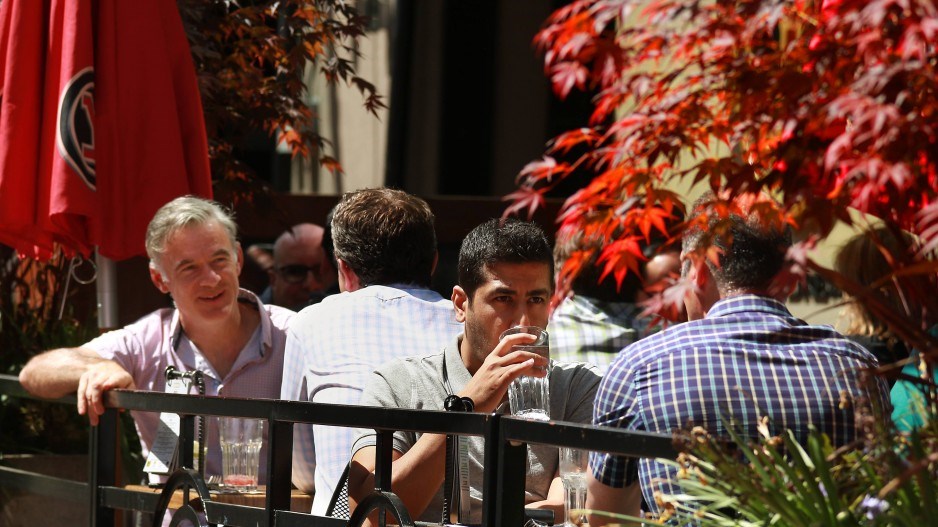As tourists scamper out of cruise ships and airplanes, and locals put away their umbrellas and jostle for good seats on local patios, B.C.’s restaurant sector is bracing for its busiest time of year.
But 2018’s high season is contending with a labour shortage that’s being compounded by changing demographics and the high cost of living, among other factors, according to a report from the BC Restaurant & Food Services Association (BCRFA).
“The dilemma for many restaurant businesses that were surveyed is that they are operating on wafer-thin margins – typically in the 3-5% profit range – as a result of rising food and labour costs, increasing property taxes, high rents and an extremely competitive market,” the March 2018 report states.
The study cites data from the most recent B.C. Labour Market Outlook estimating that of the 640,000 workers leaving the workforce over the next decade, 438,000 young people will come to replace them. This leaves a gap of more than 200,000 potential workers.
Among the 6,000 restaurants in Metro Vancouver, respondents from Asian establishments reported being particularly hard hit by changes to the federal government’s temporary foreign worker program over the past five years.
“The lack of training within British Columbia for Asian specialties means that there are very few young chefs entering the profession,” the report said. “Many Chinese operators are encouraging chefs to stay on into their 60s and 70s, and paying premium wages, as there are no trained chefs to take over for retirements.”
BCRFA president and CEO Ian Tostenson said the labour shortage has pushed some restaurants to close earlier in the day or else simplify their menus.
He’s been urging restaurateurs to set more regular schedules for employees to slow attrition rates and help attract new workers into the labour pool.
Meanwhile, restaurants are facing further constraints later this spring as the province does away with a separate minimum wage for liquor servers.
Beginning June 1, bar workers’ minimum wage will rise incrementally from the current $10.10 per hour until it reaches $15.20 in 2021.
But Tostenson said the busy summer season provides some relief for owners.
He recalled driving through Gastown late last month when his eyes were drawn to the newest location of the Local Public Eatery chain, where a sprawling patio was filled to capacity.
“They were absolutely packed on a Saturday at noon,” he said, adding that patios can make a difference of 30% to 40% in sales for restaurants with good locations.
“It’s sort of the icing on the cake. It hides anything coming out of the early spring where the weather was kind of iffy and people weren’t out as much.”
But there are challenges for owners who pursue outdoor seating options, he said.
Tostenson said Vancouver restaurateurs must plan ahead at least six months since they need patio licences from city hall as well as approval from the province to extend their business’ liquor licences to include their patios.
He said the waits are too long for an industry that is already up against the wall.
Restaurant owners “just don’t have the time because there’s this labour shortage we’re just battling with every day,” Tostenson said.
@reporton



